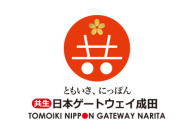But what do we do as wine producers? After looking through the latest news reports and press releases, Canopy has produced the following strategy for more eco-friendly wine production. It involves adopting regenerative agriculture and innovative packaging, enhancing energy and water efficiency, and obtaining certifications to keep you on track. Such changes will not only help to protect the planet but also meet the evolving expectations of consumers who increasingly value sustainability in their purchasing decisions.
A commitment to sustainability can also be a key differentiator for wine producers who make it central to their premium brand positioning.
But the first step is calculating your current emissions, so you know how much you have changed and improved.
Step 1: Measure your emissions
By measuring your emissions, you can plan your roadmap to cutting them.“Once you start measuring your emissions, you can then make informed business decisions around future changes and investment,” explains Dr Edwin Massey, general manager of sustainability at New Zealand Winegrowers.
Members of Sustainable Winegrowing New Zealand (SWNZ), which represents 98% of the country’s vineyard area and about 90% of the wines produced there, must submit data on their greenhouse gas (GHG) emissions. Then an individualised report is provided to each member, giving comparative data over time. In addition, there are also regional and national reports providing a macro benchmark to guide their progress.
Other countries or regions need to follow suit.
Step 2: Embrace more eco-friendly farming practises like regenerative viticulture
Regenerative viticulture is gaining momentum as a holistic approach that focuses on restoring soil health, increasing biodiversity, and sequestering carbon. Unlike conventional farming methods, it emphasises outcomes rather than strict rules, allowing for flexibility and adaptability. Practices such as cover cropping, no-till farming, and integrating livestock contribute to healthier ecosystems and more resilient vineyards. Organisations like the Regenerative Viticulture Foundation and the Regenerative Organic Alliance are supporting wineries in adopting these methods, with certifications to guide their efforts.Spottswoode Estate Vineyard & Winery in St Helena, California, which has been practising organic farming since 1985, is now Regenerative Organic Certified. It uses no-till farming, nutrient-rich cover crops and sheep grazing to enhance its vineyard soils while reducing its environmental impact. It also goes a step further by empowering fellow growers’ transition to organic farming through financial incentives and technical assistance.
Step 3: Examine your packaging for environmental impact
Packaging plays a significant role in a winery’s carbon footprint. Ways to address this include alternative materials and designs.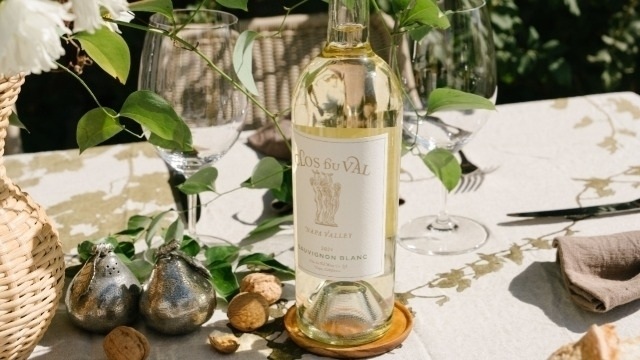
California winery Clos du Val marked this week’s Earth Day by unveiling its 2024 Napa Valley Sauvignon Blanc and 2024 Rosé in lightweight glass. The move to lightweight glass bottles is part of the winery’s broader sustainability strategy, which was implemented by CEO and third-generation owner Olav Goelet and spans the entire winemaking process from vineyard to packaging.
“Reducing our carbon footprint is an objective we have at Clos du Val, supporting our mission of positive environmental stewardship,” he said. “The switch to lightweight glass is a key component of this effort. For years, wine quality has been wrongly associated with heavier bottles, but we are proving that a lighter bottle is just as reliable for preserving the quality of our wines – while also being kinder to the planet.”
The new Clos du Val bottles are 30% lighter than traditional bottles and represent a 34% reduction in carbon emissions from glass production. The new bottles are made by Verallia.
In addition to the lightweight glass, the winery has eliminated foil capsules on both wines to further minimise environmental impact. The winery also uses kegs to pour by-the-glass in The District tasting room to help reduce packaging waste. Future releases of the Napa Valley Cabernet Sauvignon and estate wines will also be in lightweight glass.
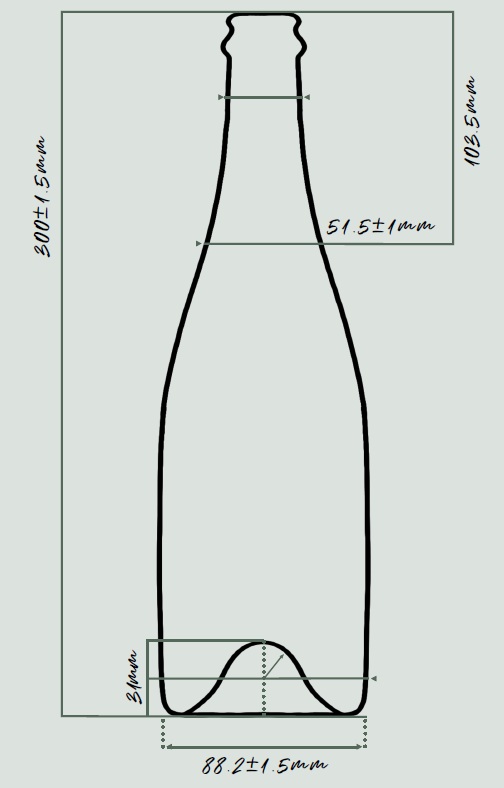
Champagne Telmont also used Earth Day to introduce its lightweight champagne bottle to the US market. Weighing 800g instead of the more typical 835g, this Verallia-made bottle debuted with Champagne Telmont’s Reserve Brut. It reduces carbon emissions by 4% per bottle.
“By adopting this ultra-lightweight bottle, we aim to redefine industry standards and contribute to a more sustainable future for Champagne,” says Ludovic du Plessis, president of Champagne Telmont.
If adopted industry-wide, this bottle could eliminate 8,000 tons of CO2 emissions annually.
Telmont began using the 800g bottles in 2022 with an initial run of 3,000 bottles. Following the required three-year ageing process, these bottles are now arriving in the US market. In 2023, production scaled to 30,000 bottles, followed by 220,000 bottles in 2024 and from 2025 100% of Telmont bottles will be produced at this new lighter weight.
In Italy, the Cento per Cento Sicilia bottle uses 100% recycled Sicilian glass. Since the 2023 vintage, Donnafugata has been bottling its Lighea white wine in the Cento per Cento Sicilia (100% Sicily) Burgundy bottle, “so-called because it is produced exclusively on the island of Sicily from recycled glass according to a virtuous circular economy model promoted by Fondazione SOStain and implemented by O-I Glass,” says CEO/co-owner José Rallo.
Weighing 410g versus the 550 of the previous bottles, the Cento per Cento Sicilia bottle is also lighter, “therefore contributing to reducing CO2 emissions and environmental impact over time”.
Boxed wines and PET bottles are gaining popularity for their lower environmental impact. For instance, boxed wine sales at upmarket UK supermarket Waitrose increased by 18% in 2024, reflecting growing consumer acceptance.
González Byass has selected its iconic Sherry, Tío Pepe, to promote the use of returnable bottles in the hospitality sector, starting with its own wine tourism experiences, the Bodega Tío Pepe Hotel and the Pedro Nolasco restaurant. By serving Tío Pepe Fino to guests in a more sustainable format, González Byass is reducing glass waste, reducing its scope 3 carbon footprint and championing the use of resuable glass bottles in hospitality.
Part of Rebo2Vino, a project led by the Federación Española del Vino (FEV, Spanish Wine Federation), this innovation has involved the development of a specially designed, environmentally friendly Tío Pepe bottle.
Victoria González-Gordon López de Carrizosa, chief sustainability officer for González Byass, comments: “The team is very excited to launch this test as the next step in González Byass’ sustainability journey. We wanted to explore the viability of reusing bottles in the Spanish on-trade, and by starting the project in our own restaurants and hotel, we will be able to gain firsthand experience of this circularity option.”
Step 4: Improve energy efficiency and transition to renewable energy
Energy consumption is a critical area for sustainability improvements.Spanish wineries Viñas del Vero and Viñedos del Río Tajo are setting a great example in integrating renewable energy into winemaking.
As part of the European HarvRESt (Harnessing the Vast Potential of RES for Sustainable Farming) project, they are harnessing four innovations that will significantly reduce carbon emissions, optimise energy use, and improve efficiency in both the vineyard and winery, according to the project. Among the key developments is the introduction of an electric tractor and an autonomous vineyard robot, both designed to decarbonise vineyard operations. Agrivoltaic technology has also been introduced, allowing the vineyards to optimise land use by integrating solar energy into farming practices. In addition, an intelligent energy management system has been implemented at González Byass-owned Viñas del Vero in Somontano to monitor energy consumption, production, storage, and grid usage, ensuring maximum efficiency.
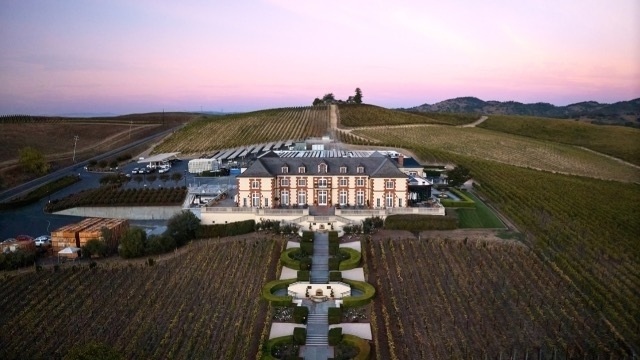
California sparkling wine producer Domaine Carneros has been using solar energy for more than 20 years. What began in 2003 as the world’s largest winery solar installation has evolved into a cutting-edge microgrid system that now provides nearly 80% of the winery’s energy needs while reducing carbon emissions by 375 metric tons of CO2 annually, equivalent to powering 50 homes for a year.
“When we installed our first solar array two decades ago, we were at the forefront of renewable energy adoption in the wine industry,” notes CEO Remi Cohen. “Today, our advanced microgrid technology represents the next generation of energy independence and environmental stewardship. As climate challenges intensify, Domaine Carneros continues its commitment to leading with a light footprint while crafting the highest quality wines.”
In partnership with Schneider Electric, Domaine Carneros deployed the EcoStruxure Microgrid in 2023, doubling the winery’s energy generation capacity. The system integrates 614 upgraded solar panels generating 427 kilowatts of clean energy with a 250KVA battery backup and generator. This infrastructure ensures uninterrupted operations during increasingly common power outages due to wildfires and severe weather events, and the system stores excess solar energy generated during the day for use in the evenings or early mornings during peak demand.
The microgrid’s intelligent controls leverage AI to optimise energy usage in real time, resulting in significant operational benefits:
- Self-generation of nearly 80% of energy for winery operations
- Annual savings of $70,000
- Ability to operate in “island mode” during grid outages
- Solar power production of 740MWh in the last year, equivalent to taking 110 cars off the road
At Jordan Vineyards & Winery in Sonoma’s Alexander Valley, solar panels generate 70% of the winery’s electricity while greenhouse gas emissions have dropped 86% by procuring its remaining electricity from local renewable energy sources.
Step 5: Optimise water use
This month, New Zealand Winegrowers is completing a pilot for a digital tool that will help wineries and vineyards to optimise their water use through conservation and reduction.In Napa Valley, Chandon has made water conservation a top priority with automated irrigation and real-time moisture monitoring on 257 acres of vineyard and drought-tolerant rootstocks planted to even more acres, reducing water use across the vineyard. Over 80% of the water used in their vineyards is recycled, ensuring efficiency without compromising vine health.
Spottswoode’s water conservation efforts include real-time vine water analysis, nighttime irrigation and high-efficiency cleaning systems. These have cut water use by 28% since 2010.
Step 6: Gain sustainability certifications
Certifications provide a framework for sustainable practices and communicate commitment to consumers.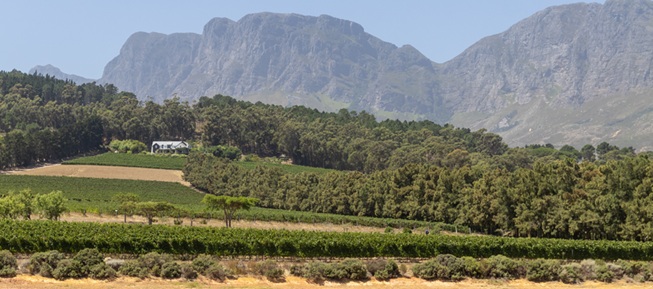
As the first South African vineyard and winery to become B Corp Certified, Journey’s End is positioning itself as an industry leader in ethical, sustainable, and purpose-driven winemaking.
Since its foundation in 1995, sustainability has been at the heart of everything at the Stellenbosch estate. Its initiatives, according to the company, prioritise climate resilience, biodiversity protection, and social impact, ensuring a positive legacy for future generations.
Some of the initiatives in place that are aligned with the B Corp scheme – a global accreditation awarded to businesses that meet the highest standards of social and environmental impact, transparency, and accountability – include:
- Carbon and energy efficiency: One of South Africa’s first solar-powered wineries, operating fully off-grid with an advanced battery system.
- Water stewardship: Journey’s End is fully self-sufficient when it comes to water due to rainwater harvesting, wastewater recycling, and precision irrigation to drive responsible water use throughout the estate.
- Regenerative agriculture: Over 10,500 native South African spekboom succulents planted, enhancing carbon sequestration and soil health.
- Community-led impact: The Journey’s End Foundation has provided over five million meals through local female-run soup kitchens, tackling food insecurity head-on.
“We hope to inspire others in the wider industry to join us on our mission to be a force for good while crafting exceptional, terroir-driven wines”

Five González Byass wineries have now achieved the Sustainable Wineries for Climate Protection certification – with Beronia Rueda the latest to join the list. In addition, 68% of González Byass vineyards are now certified as sustainable, according to the group’s latest Sustainability Report. The report, which summarises progress during the 2023-2024 fiscal year across environmental impact, social responsibility, and governance, says the company has cut emissions by 22% year on year and now sources 53% of its energy from renewables across its wineries in Spain, Mexico, and Chile. Other achievements include a 12% reduction in water use compared to 2023 and a 99% waste recovery rate.
But first they had to measure everything. What are you waiting for?

 English
English French
French

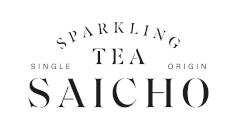




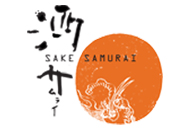
.png)
